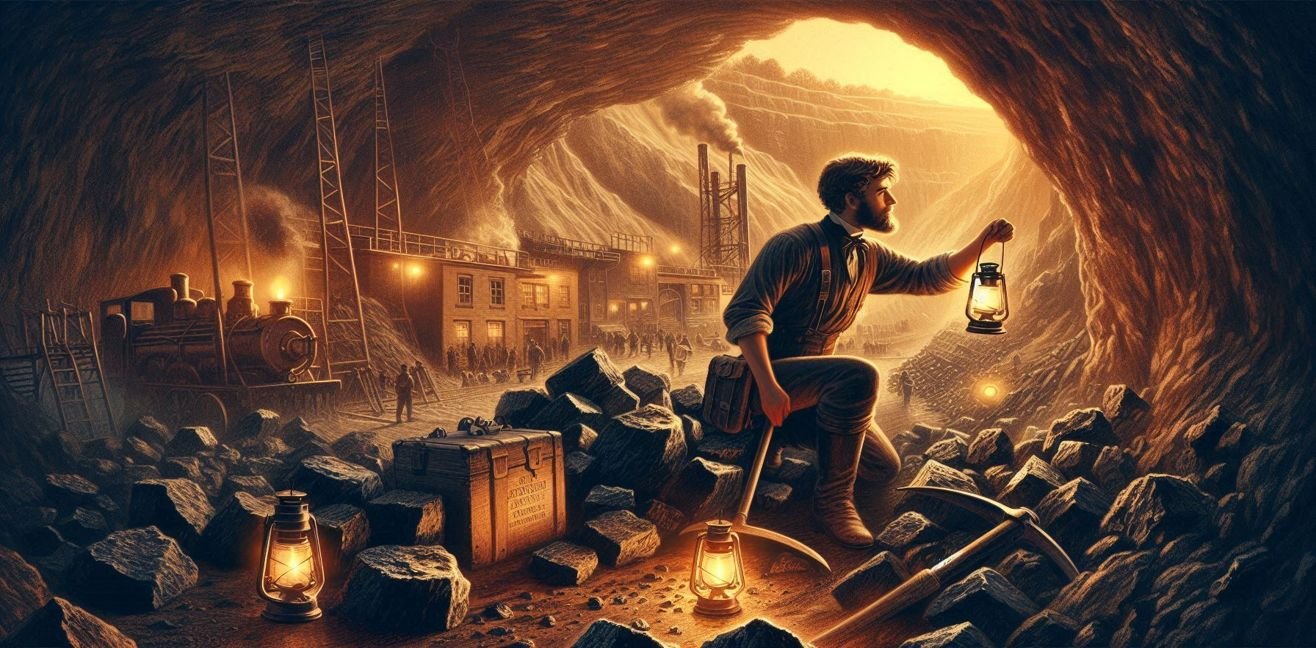Hello, dear science and history enthusiasts! 💫 Today, we’re taking you back to the 19th-century Ottoman lands. Get ready, because in front of you is Turkey’s first coal discovery and its hero, Uzun Mehmed. But this article isn’t just a historical tale; it will also cover the geological, chemical, and industrial aspects of coal in a technical journey. ⚡⛏️
🕵️♂️ Who Was Uzun Mehmed and What Kind of Explorer Was He?
Although personal details about Uzun Mehmed are limited, he made history with his observations around Zonguldak during the Ottoman era. Legend has it that he was tall and endlessly curious 😄. His ability to notice hidden underground resources made him a kind of geological detective.
At that time, modern geology didn’t exist in Turkey; yet Uzun Mehmed’s instincts and observations remind us of the basic steps of the scientific method: observation → hypothesis → verification.
🏞️ Turkey’s First Coal Discovery
Geological Background
The Zonguldak region is located on the western coast of the Black Sea and is covered with sedimentary rocks from the Carboniferous period (approximately 359–299 million years ago). During this period, dense forests, lakes, and swamp systems existed. When plant material died and became submerged under water, it underwent millions of years of pressure and heat, initiating the coalification process. 🔬
Coal essentially forms from the concentration of organic carbon, and its energy content varies by type:
- Lignite: Low carbon, low energy, high moisture
- Bituminous coal: Medium carbon, medium-high energy
- Anthracite: High carbon, high energy, low moisture
The coal Uzun Mehmed discovered corresponds to what we know today as bituminous coal, suitable for industrial use. ⚡
The Discovery Moment
According to legends, while examining rock and soil samples, Uzun Mehmed noticed a black, shiny, and heavy mineral. This material was combustible and had high energy potential. Simple tests with a matchstick confirmed he was on the right track: this was Turkey’s first coal discovery! 🖤
🔬 Scientific Properties of Coal
Coal is not just a “black rock”; it is composed of plant material compressed over millions of years. Chemically, coal contains:
- 70–90% carbon (C)
- 3–10% hydrogen (H)
- 0.5–3% nitrogen (N)
- 1–10% oxygen (O)
- 1–15% sulfur (S)
- Trace elements and mineral ash
The energy efficiency of coal depends on its carbon content: the higher the carbon, the higher the energy. Bituminous coal ignites more easily than anthracite, though its energy density is slightly lower.
Additionally, geochemical analysis of coal plays a critical role in evaluating coal deposits. Energy content, combustion temperature, and ash content are measured. Uzun Mehmed laid the foundation for this process with his simple but insightful observations.
⚙️ Industrial Importance of Coal
Coal discovery was not just about burning fire; it became a key energy source for industrial revolution. Industrialization in the Ottoman Empire was beginning, and coal was critical for iron and steel production, steam engines, locomotive trains, and domestic heating.
This discovery laid the foundation for Turkey’s energy infrastructure, and in the following years, Zonguldak became Turkey’s coal hub.
😄 Fun and Interesting Facts
- According to legend, after discovering coal, Uzun Mehmed told villagers, “What will we do with this?” – yet he was already seeing the energy of the future. 😎
- At that time, the value of coal wasn’t fully understood, but today we recognize Uzun Mehmed as an energy visionary.
- Coal mines serve not only as energy sources but also as laboratories for geological and environmental research.
✨ Conclusion: The Light Shining in History’s Darkness
Uzun Mehmed and Turkey’s first coal discovery represent a victory of science, observation, and curiosity. This discovery shaped the course of Turkey’s energy and industrial history.
Coal, a product of millions of years of geological processes, not only provides energy but is also a natural engineering marvel. Uzun Mehmed’s courage and curiosity remind us that curiosity is one of the most important driving forces behind scientific discovery. 💡🖤




